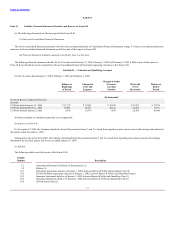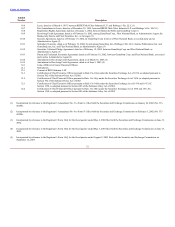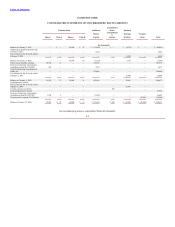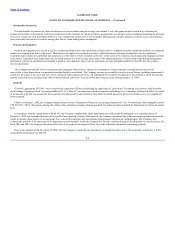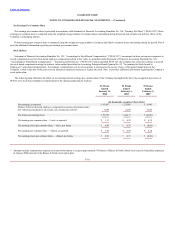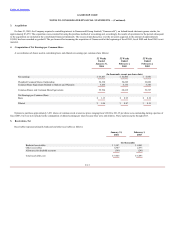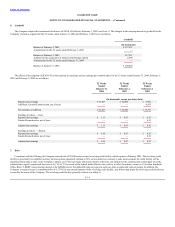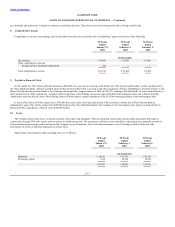GameStop 2003 Annual Report Download - page 49
Download and view the complete annual report
Please find page 49 of the 2003 GameStop annual report below. You can navigate through the pages in the report by either clicking on the pages listed below, or by using the keyword search tool below to find specific information within the annual report.
Table of Contents
GAMESTOP CORP.
NOTES TO CONSOLIDATED FINANCIAL STATEMENTS
1. Summary of Significant Accounting Policies
Background and Basis of Presentation
GameStop Corp. (“GameStop” or the “Company”) was incorporated under the laws of the State of Delaware in August 2001 as a holding company for
GameStop, Inc. GameStop is a majority-owned subsidiary of Barnes & Noble, Inc. (“Barnes & Noble”).
GameStop, which began operations within its wholly-owned subsidiary, Babbage’s Etc. LLC (“Babbage’s”) in November 1996, is principally engaged in the sale
of new and used video game systems and software, personal computer entertainment software and related accessories primarily through its GameStop trade name, a
web site (gamestop.com) and Game Informer magazine. The Company operates its business as a single segment. The Company’s stores, which totaled 1,514 at
January 31, 2004, are located in major regional shopping malls and strip centers in 49 states, the District of Columbia, Ireland, Puerto Rico and Guam.
During June 2000, Barnes & Noble acquired Funco, Inc. (“Funco”), a publicly traded company on the NASDAQ National Market and, thereafter, through a
corporate restructuring, Babbage’s became a wholly-owned subsidiary of Funco. In December 2000, the name of Funco was changed to GameStop, Inc.
In February 2002, the Company completed a public offering of 20,764 shares of Class A common stock at $18.00 per share (the “Offering”). The net proceeds of
the Offering, after deducting applicable issuance costs and expenses, were $347,339. A portion of the net proceeds was used to repay $250,000 of intercompany debt
owed to Barnes & Noble. Additionally, upon the effective date of the Offering, Barnes & Noble made a capital contribution of $150,000 for the remaining balance of
the intercompany debt.
Upon the effective date of the Offering, the Company’s Board of Directors approved the authorization of 5,000 shares of preferred stock, 300,000 shares of Class A
common stock and 100,000 shares of Class B common stock. At the same time, the Company’s common stock outstanding was converted to 36,009 shares of Class B
common stock. The consolidated financial statements and related net earnings per common share reflect the authorized number of shares as if the shares were
authorized on February 4, 2001.
Consolidation
The consolidated financial statements include the accounts of GameStop and its wholly-owned subsidiaries. All significant intercompany accounts and transactions
have been eliminated in consolidation. All dollar and share amounts in the consolidated financial statements and notes to the consolidated financial statements are stated
in thousands unless otherwise indicated.
Year-End
The Company’s fiscal year is composed of the 52 or 53 weeks ending on the Saturday closest to the last day of January. Fiscal 2003 consisted of the 52 weeks
ending on January 31, 2004. Fiscal 2002 consisted of the 52 weeks ending on February 1, 2003. Fiscal 2001 consisted of the 52 weeks ending on February 2, 2002.
Cash and Cash Equivalents
The Company considers all short-term, highly-liquid instruments purchased with an original maturity of three months or less to be cash equivalents. The
Company’s cash and cash equivalents are carried at cost, which approximates market value, and consist primarily of time deposits and money market investment
accounts.
F-7



